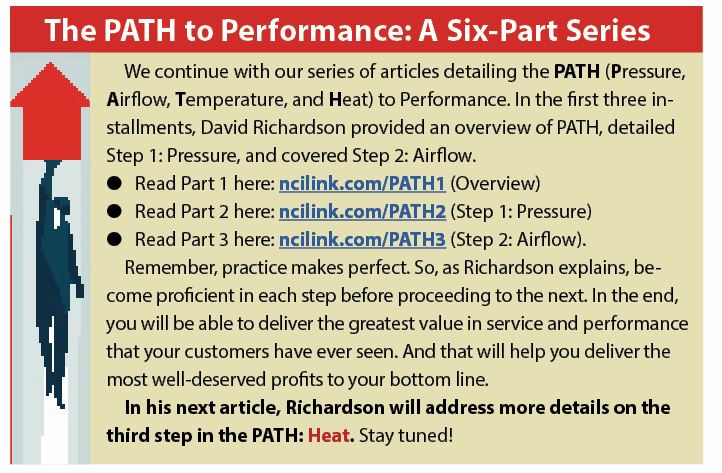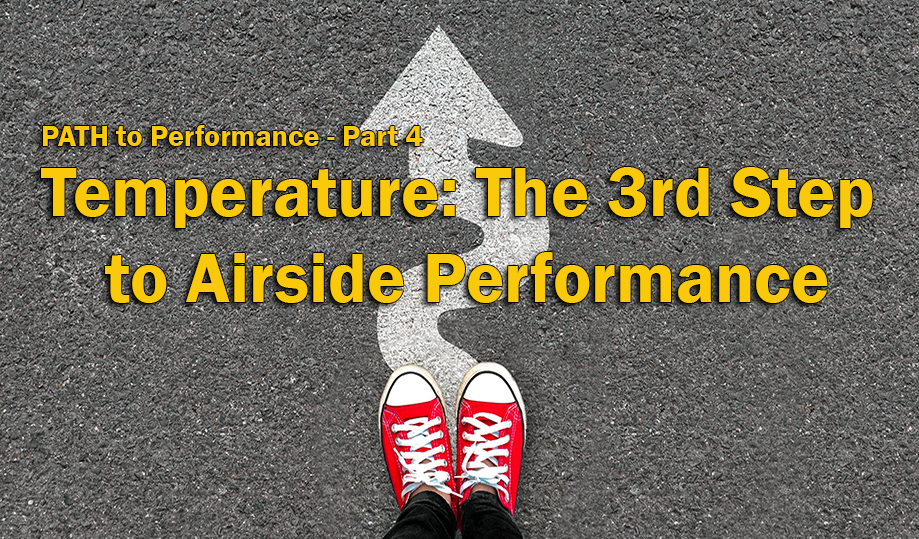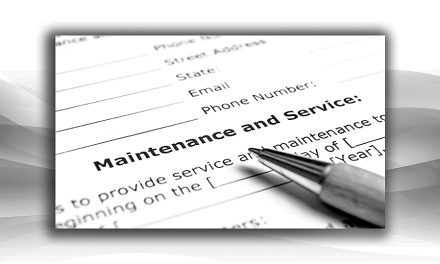Temperature: The Third Step to Airside Performance
Temperature is the third step on the path to performance. Since many are already familiar with how to measure it, the path to performance gets easier at this step. However, many of us limit our temperature testing to the equipment and fail to see its impact on the rest of the system.

As you move along the path to performance, you’ve already mastered the concepts of static pressure and airflow. Now it’s time to consider the temperature at the supply registers and return grilles. These measurements often reveal a significant negative impact on the comfort of your customers which is critical to your system performance diagnostics.
Once you release the true potential of temperature testing, you’ll quickly discover why oversized systems appear to work well, while properly sized systems often cannot provide comfort.
Temperature Principles
It’s helpful to review some basics before we discuss how it ties into the performance path. First, hotter temperatures always move towards cooler temperatures, or hot goes to cold. Second, hotter air rises while colder air falls.
For those of you who’ve attended National Comfort Institute’s (NCI) Carbon Monoxide (CO) and Combustion Performance course (ncilink.com/COTest), you’ve seen how we tie these principles into draft pressure and stack effect.
When you measure HVAC temperatures, you typically use two types: dry bulb and wet bulb. Dry bulb measurements help interpret the amount of heat in the air. It typically refers to the temperature you can feel such as when a gas furnace kicks on and warms up the air. Use this when testing heating and cooling systems.
You should use wet bulb for cooling system testing. This reading accounts for both heat and moisture content in the air.
We rarely do much with wet bulb as a single temperature reading. Instead, we use it in combination with other measurements, like dry bulb to determine other air properties such as relative humidity.
Then there is something called dew point temperature. This is a third measurement that helps us understand at what temperature moisture in the air condenses on a surface.
For example, let’s consider an uninsulated metal duct system in a crawlspace. As the cooling system runs on a humid summer day, the ducts sweat. The duct temperature is lower than the dew point, so condensate forms. As soon as your back brushes against those ducts, you’re soaked.
Test Instruments
Before you can measure temperature, you need quality digital test instruments capable of measuring to a tenth of a degree (.10’F) inside the duct system. These instruments include:

- Digital Thermometer ‘ for gathering heating and cooling dry bulb readings
- Digital Psychrometer ‘ for measuring cooling system temperatures such as dry bulb, wet bulb, and dew point. Additional air properties such as enthalpy and relative humidity are also available.
NOTE: Keep fresh batteries handy for your test instruments. Many digital instruments lose accuracy when the battery charge is low. Reaction time is also important with any thermometer. They should adjust quickly to changing temperatures. If your thermometer or psychrometer is older and slower, consider investing in a newer model.
Click below to go to the next page













Recent Comments